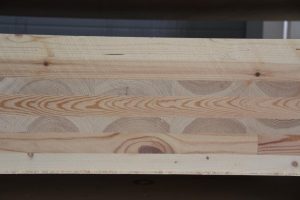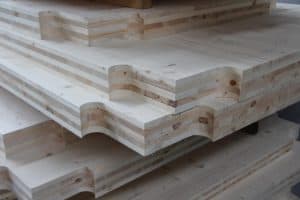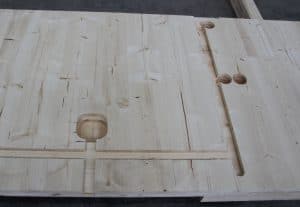Useful information
Building in timber frame and CLT helps reduce emissions
05.09.2019 16:00

Timber structures would allow us to draw carbon from the air and store it in our homes and offices. Leading some to believe that wooden buildings are the future of architecture.
Our dependency on concrete and steel to build everything from homes to sports stadiums, comes at a severe environmental cost. Concrete is responsible for 4-8% of the world’s carbon dioxide (CO2) emissions. Second only to water, it is the most widely used substance on Earth, accounting for around 85% of all mining and linked to an alarming depletion of the world’s sand. Globally, enough concrete is poured each year to cover the whole of England.
Wood from managed forestry actually stores carbon as opposed to emitting it: as trees grow, they absorb CO2 from the atmosphere. As a rule of thumb, a cubic metre of wood contains around a tonne of CO2 (more or less, depending on the species of tree) – which is similar to 350 litres of gasoline.
Not only does wood remove more CO2 from the atmosphere than it adds through manufacture. But by replacing carbon-intensive materials such as concrete or steel it doubles its contribution to lowering CO2. A recent advisory report to the UK government on the uses of “Biomass in a low-carbon economy” found that, “the greatest levels of [greenhouse gas] abatement from biomass currently occur when wood is used as a construction material… to both store carbon and displace high carbon cement, brick and steel.”
Between 15% and 28% of new homes built in the UK annually use timber frame construction, capturing over one million tonnes of CO2 a year as a result. Increasing the use of timber in construction could triple that amount. Savings of a similar magnitude may also be possible in the commercial and industrial sectors by utilising new engineered wood systems such as Cross-laminated timber. The ingenuity is that the CLT are made stronger by gluing them in layers of three, with each layer perpendicular to the other. This means that the CLT doesn’t bow or bend, it has integral strength in two directions.
CLT also performs well in fires. It is designed to withstand heats of up to 270C before it begins to char. The charring on the outside then acts as a protective layer for the structural density of the wood behind it. By contrast, at similar temperatures concrete can spall and crack, and steel loses its strength.
There are even advantages that make the CLT particularly attractive to countries like Japan, since it has been found to perform well in earthquake tests. A joint Italian-Japanese research team built a seven-storey CLT building and tested it on a “shake table”. The CLT earthquake shake test video you can see here .
Arguably, the best form of carbon sequestration is to chop down trees. To restore our sustainable, managed forests, and use the resulting wood as a building material. Managed forests certified by the Forest Stewardship Council (FSC) typically plant two to three trees for every tree felled. Meaning the more demand there is for wood, the greater the growth in both forest cover and CO2-hungry young trees.
The information for this blog is taken from the article “Could wooden buildings be a solution to climate change? “ by Tim Smedley, BBC.


